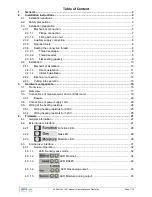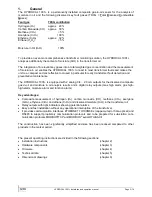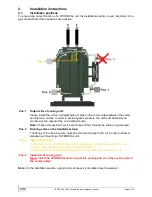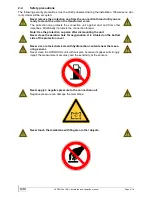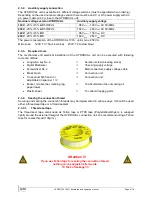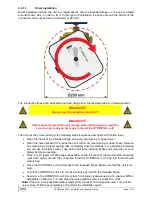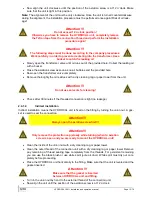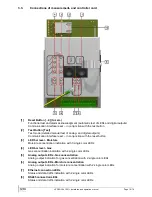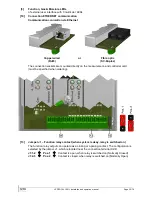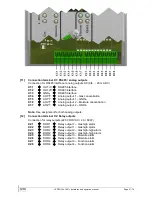
HYDROCAL 1001+ Installation and operation manual
Page 7/76
2.3.
Installation preparation
Attention!!!
Always open the aeration screw first!!!
Before installation, a visual inspection of the membrane must be carried out. Open the aeration screw
3 to 4 turns while turning CCW with a long Allen key No. 4. Slowly remove the protection cap while
turning CCW and check the membrane. No cuts or tears should exist, the surface must be smooth.
Do not touch the membrane with fingers or with any other objects. Unscrew the knurled thumb
screws, remove the protection cover and check visually the components. For the installation remount
the protection cover and fasten it with the knurled thumb screw.
2.3.1.
Mechanical connection
The external thread type of the HYDROCAL connection unit is even G 1½’’ ISO DIN 228-1 or
1½’’ NPT ANSI B 1.20.1 (must be specified when ordering).
The HYDROCAL unit should be installed on a gate valve with full bore or on a ball valve to the trans-
former.
These locking elements are usually provided with a blind flange. Therefore they must be upgraded
before mounting the HYDROCAL unit with a corresponding threaded flange, connection adapter or a
fitting with union nut.
This results in two different mounting ways (direct and indirect).
2.3.1.1.
Flange connection
The unit is screwed directly onto the threaded flange, i.e. the unit is rotated around its own axis in
order to fix it. In this type of installation the space around the center of the connection unit must be
free in a diameter of 280 mm.
Note:
The thread depth of the threaded flange or the connection adapter should be at least 25 mm.
2.3.1.2.
Fitting with union nut
We recommend installing the HYDROCAL unit with a fitting with union nut (flat sealing) to the trans-
former gate / valve. This fitting consists of a threaded flange, a flat sealing union end and a union nut.
In this case the union nut must be rotated to fix the HYDROCAL unit and a gasket is used to seal the
connection. An additional thread sealing with thread seal tape or thread sealant is not or rarely nec-
essary in this case.
Note:
Ball valves with union nut are also available (pump ball valve).



